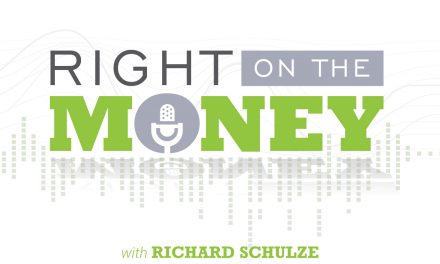When Portfolio Performance is Sub-Optimal, It’s Time for Second Opinion
Many modern portfolio proponents use the risk-return theory of the efficient frontier to measure market returns against risk exposure. The goal is to optimize returns with the least amount of risk. If portfolio performance falls below the efficient frontier, the portfolio is deemed sub-optimal.
Here are some highlighted excerpts from the interview with chartered financial consultant, investment advisor representative and author Mark Roberts:
Steve: How do you know you’re getting the right return for the right risk?
Mark: That’s a great question. I ask clients all the time if they know the return they’re getting isn’t the right amount, and they look puzzled. They can answer where they think their risk is. Where they expect their risk to be, and sometimes they’re accurate, and sometimes they’re not. Sometimes we find their risk is actually far more or less than what they thought it was. Regardless, it really boils down to how do you measure the return you’re getting for the risk you have? It really boils down to software. Software that is out there, available to other financial professionals. You just have to buy it, and you have to know how to use it.
Steve: Now, is one of those ways you quantify it is thinking about efficient frontier? I’d like you to talk about that, because to me, that helps people visualize what you’re talking about.
Mark: Well, an efficient frontier is a graph that after we use software and we create some past performance history, and their risk, you can measure risk through multiple channels. The most primary common one is something called standard deviation. Then, you measure their standard deviation to their risk, then we can graph that out. This is what we’re using here, is an example of a 3-year efficient frontier measured return going up and down and the risk going left and right. That is our lows at Affinity Asset Management on that squiggly little line going across the page. We have all bonds, we have all stocks and we have five in the middle where we added more stock. The return goes up, but the risk goes up.
Steve: My psychonomics of me, Steve the boomer, has changed quite a bit since the 2008 meltdown. I really feel like my risk tolerance is really low now. I used to be much more aggressive. Do you find more baby boomers now approaching this from the risk rather than the return?
Mark: That’s a good way to say that. I think the 2008 market crashing was so damaging to people that even though the last, 6 to last 7 years the market has been good, they still haven’t forgotten about 2008, and they’re waiting for the next 2008 to come around. As these baby boomers are aging, their getting closer to retirement or maybe they are retired, they are looking to get more conservative, so I think that’s fine to get more conservative, let’s just make sure we’re getting the proper return for it.
Watch the interview with chartered financial consultant, investment advisor representative and author Mark Roberts.
Syndicated financial columnist Steve Savant interviews author, popular platform speaker and investment adviser representative Mark Roberts. Right on the Money Show is an hour long financial talk distributed to 280 media outlets, social media networks and financial industry portals.





